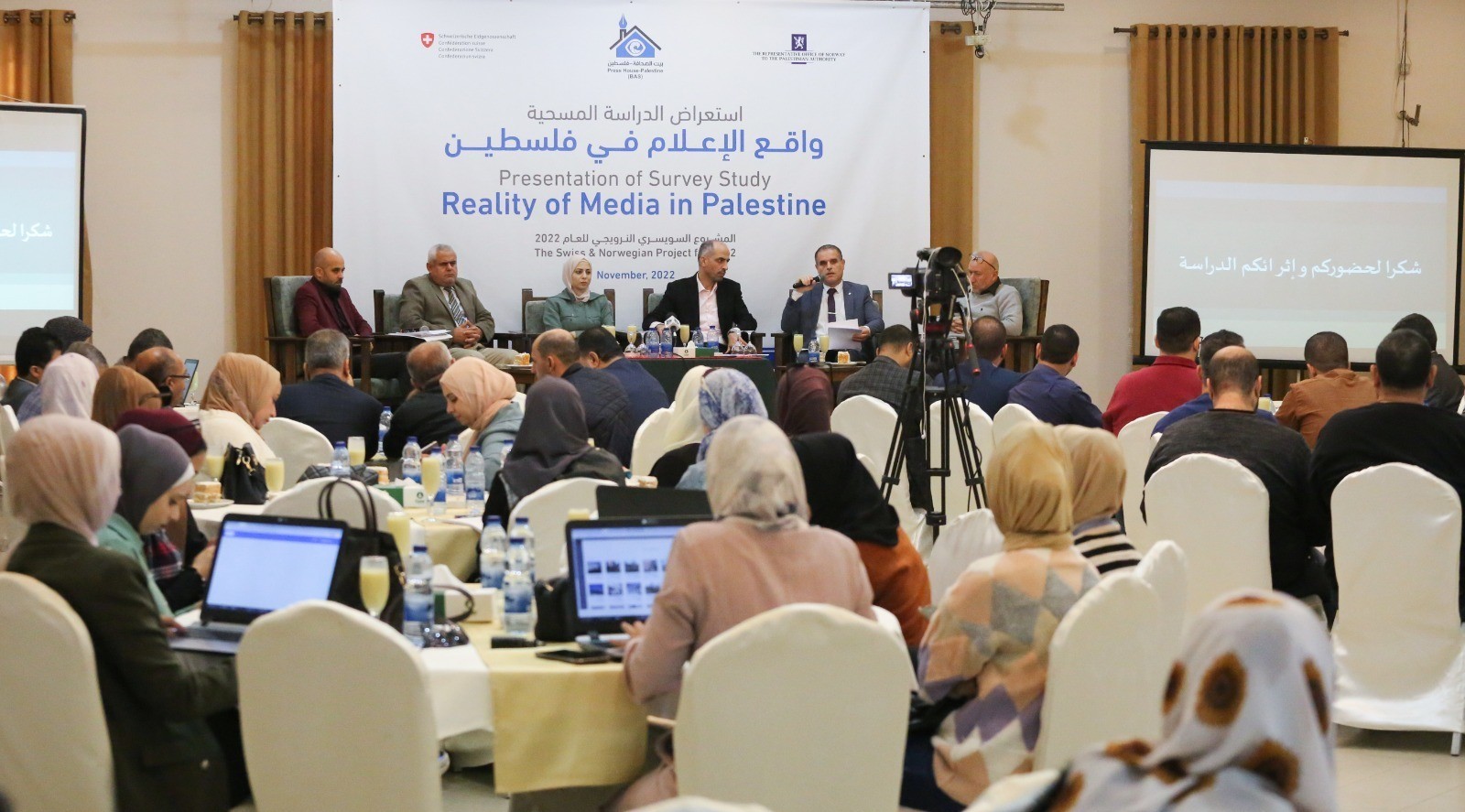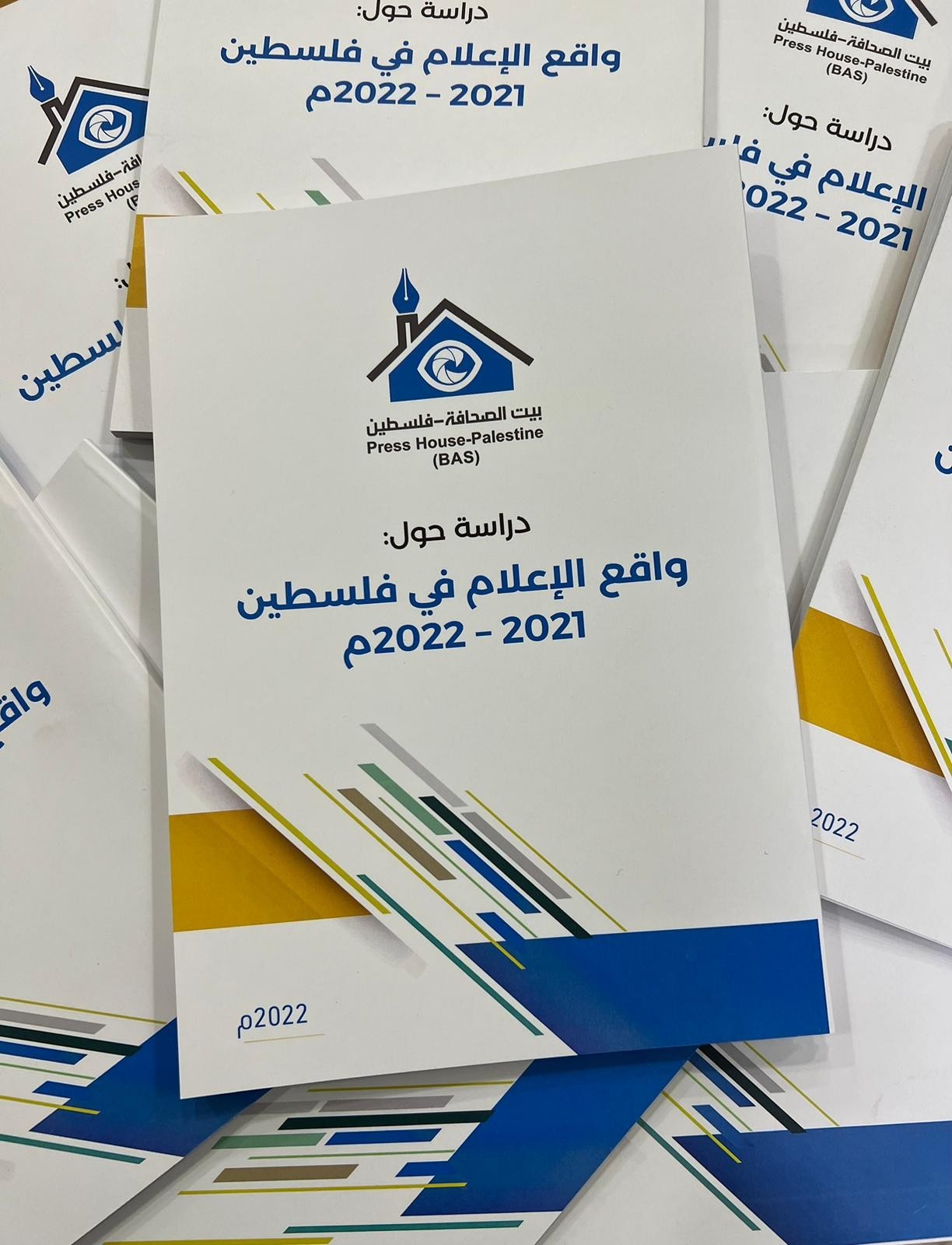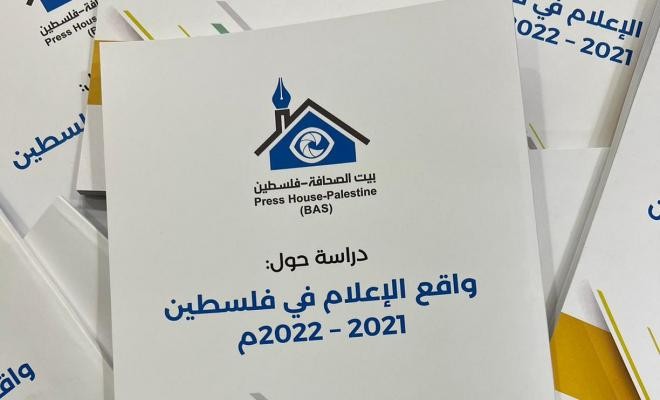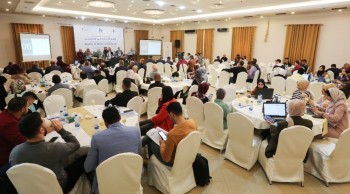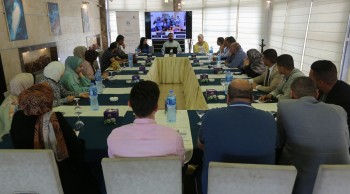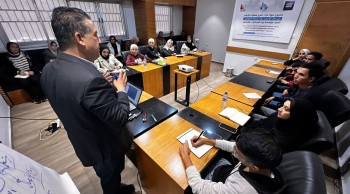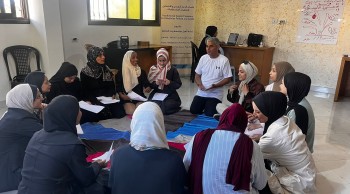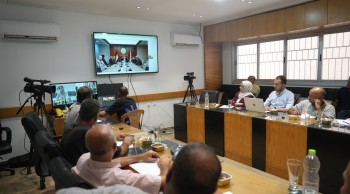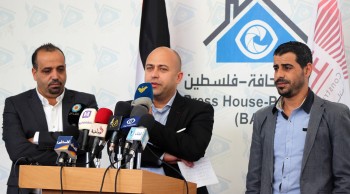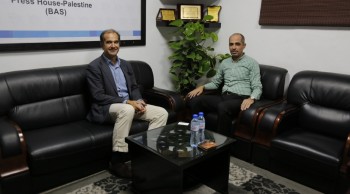A recent study by Press House-Palestine identified the number of graduates from Journalism and Media programs in the Gaza Strip and the the West Bank during 2021, as it came up with key important recommendations that included official authorities, Palestinian universities, and recommendations related to Media.
The study dealt with a number of topics, the most important topics were on the reality of journalism and media faculties and departments in Palestine, the reality of unemployment rates for journalism and media graduates, from media sector workers perspective, and key challenges and obstacles that facing the Palestinian media. The study also dealt with the reality of paper journalism and new media and the nature of Palestinian laws and legislations regulating press and media in Palestine. The study was based on a number of official and unofficial references, in addition to interviews conducted with experts in the field of media and focus groups with relevant authorities.
According to the study on (Media Reality in Palestine 2021-2022) prepared by Effects Consulting and Development Company, the number of Master's Degree graduates reached (21), while The Bachelor's Degree graduates reached (1528), and the diploma reached (25[MAj1] ) in Gaza Strip.
As for the West Bank, the number of Master's Degree graduates reached (21), while the number of Bachelor's Degree graduates reached (596), while the number of diploma graduates reached (101).
The study indicated that the total number of Journalism and Media graduates in 2021-2022 in Palestine reached (2292).
Media Organizations in the West Bank
The study identified the number of licensed media institutions in the West Bank, according to the Palestinian Ministry of Information in Ramallah, the number of news agencies in 2022 reached (12), while the number of press offices reached (22), the number of newspapers and magazines (15), and the number of associations working in the field of media reached (22).
Media Organizations in Gaza
The study showed that the number of licensed radio stations from the Government Information Office in Gaza is (24), knowing that the number of actual radio stations operating is (16), (5) licensed radio stations stopped broadcasting for various reasons and their license is still ongoing, and (1) radio station that does not have a full license and is broadcasting, it also turned out that there are three working (rebroadcast) international radio stations (Al Jazeera – Monte Carlo, BBC).
.
The number of news agencies reached (16), while the number of TV channels was (5), and newspapers and magazines reached (12), noting that the number of daily newspapers issued in Gaza are two newspapers; Palestine Newspaper and Al-Istiqlal Newspaper, while Al-Risala newspaper stopped issuing its paper version and kept the digital publication since March 2019. As for the other newspapers and magazines, they hold licenses and do not work in an organized manner and do not issue periodically, as for the number of media production companies, they reached (29) licensed companies.
Higher education institutions in the West Bank and Gaza
The study showed the number of higher education institutions in the West Bank and the Gaza Strip for the years 2020-2021, as for the West Bank, there are (10) traditional universities, (2) open education universities, (11) university colleges, and (11) intermediate colleges, in Gaza, there are (6) traditional universities, (5) university colleges, and (6) intermediate colleges.
Unemployment rate
The study showed that unemployment rates among graduates of journalism and media faculties and departments recorded a clear decrease in the West Bank compared to the Gaza Strip, as they reached during the period 2016 to 2021 in the West Bank respectively (32.2%، %24.3، %25.8، %18.1 ، %24.3 ، and 26.9%), and the year 2019 was the most declining in the unemployment rate, reaching (18.1%).
In the Gaza Strip, the unemployment rate increased significantly among graduates of journalism and media faculties and departments, as they reached during the period 2016 to 2021 respectively (47.6%, 53.9%, 61.8%, 59.6%, 61.6%, 41.7%).
Study recommendations
The study came out with a number of key important recommendations, which were divided into three sections, including recommendations for Official Authorities, Universities, and Media, as the following;
First: Official Authorities:
Calling on the Ministry of Higher Education in the West Bank and the Ministry of Education in the Gaza Strip to strengthen the supervision over the performance of universities and colleges and the extent of their commitment to quality standards and licensing conditions granted to universities.
Reconsidering the granting of new licenses to journalism and media faculties and departments to prevent further accumulation of these faculties and departments, given that the labor market currently does not need these numbers of graduates without sufficient job vacancies.
Increase acceptance admission rates to media colleges and set serious terms and conditions such as interviews, English language proficiency and pre-tests in order to reduce the number of applicants to study Media while ensuring the presence of students with distinctive characteristics.
Amending the Press and Publications Law to transform it into a media law that keeps pace with the development in the field of digital media and provides a suitable environment for journalists to enjoy the right to express opinions and freedom of publication.
Amend the laws in force, such as the Penal Code in both the Gaza Strip and the West Bank, that ensures the protection of journalists from violations of their rights and protects them from their exposure to penalties of deprivation of liberty.
Work on distancing political differences from the Journalists Syndicate and conduct elections to enable journalists to choose their representatives impartially and independently.
Granting greater facilities to media organizations in terms of technical and administrative licensing conditions and reducing their cost.
Second: Universities
Urge the faculties and departments of journalism and media to develop permanent practical plans for development and change in accordance with sectoral development plans with the continuous evaluation of these plans according to the latest global and modern developments in the field of journalism and media education and training.
Develop study plans periodically for faculties and departments of journalism and mass media to keep pace with modernity.
Develop the skills of Palestinian academics and building their capacities in the field of media through scholarships, external training and academic exchange programs between Palestinian and foreign universities.
Enhance the role of foreign languages, especially English and French, in the media curricula in the Palestinian universities.
Take more serious measures in dealing with field training and university training to better prepare undergraduates for the local or global market before graduation.
Enhance the curriculum with courses that enable students to use the internet and new journalism and media tools such as (infographic, motion graphic, text and image blogs, and voiceover..etc)
Third: Media
Ensure that media institutions are stripped of appointments based on nepotism and are characterized by objectivity, transparency, integrity and work on the following:
Develop and build the self-capabilities of the crews working in the digital and technical fields.
Attract journalists and urge work crews to be fluent in English as a second language in order to attract more customers and clients.
Stay committed to the minimum wage in the media sector in order to improve the economic situation of journalists, as this will reflect on their productivity and the quality of the media outcome.
Benefit from the experiences of international media organizations such as in the digital transformation from paper copies to the free digital space.
Continuous building in the capacities of journalists and media students from civil society institutions, especially the media institutions, to bridge the gap between the requirements of the labor market and the outputs of low-quality university education.
